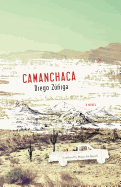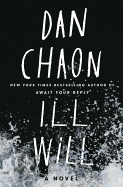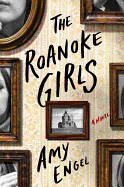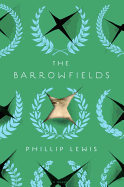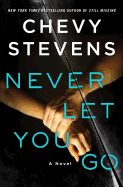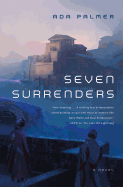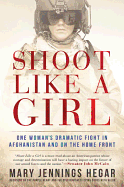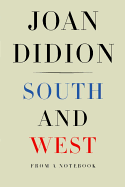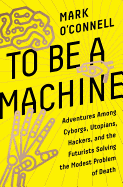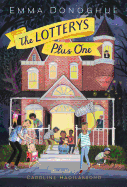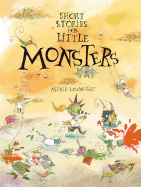Nothing says Easter like eggs, lambs and bunnies, and there are eggs, lambs and bunnies galore in these pastel-toned picture books, our top picks for nestling into an Easter basket alongside the jelly beans and chocolate rabbits.
 We're Going on an Egg Hunt (Bloomsbury, $17.99, hardcover, 24p., ages 3-6, 9781681193144, February 14, 2017) is British illustrator Laura Hughes's lift-the-flap Easter version of the classic camp song about a bear hunt. In this case, basket-, bucket- and net-carrying bunnies search for colorful eggs, overcoming all obstacles: "Oh, no--LAMBS!/ Can't go over them./ Can't go under them./ Can't go around them./ Got to go through them...." The excitement of Easter egg hunting intensifies when young readers find a big, scary surprise behind a huge, beautiful egg. Retreat! "Back through the ducks. Quack! Quack! Quack! Back through the bees. Buzz! Buzz! Buzz!" Just like the original bear hunt, all's well that ends well in this delightful interactive picture book, destined to become an Easter tradition.
We're Going on an Egg Hunt (Bloomsbury, $17.99, hardcover, 24p., ages 3-6, 9781681193144, February 14, 2017) is British illustrator Laura Hughes's lift-the-flap Easter version of the classic camp song about a bear hunt. In this case, basket-, bucket- and net-carrying bunnies search for colorful eggs, overcoming all obstacles: "Oh, no--LAMBS!/ Can't go over them./ Can't go under them./ Can't go around them./ Got to go through them...." The excitement of Easter egg hunting intensifies when young readers find a big, scary surprise behind a huge, beautiful egg. Retreat! "Back through the ducks. Quack! Quack! Quack! Back through the bees. Buzz! Buzz! Buzz!" Just like the original bear hunt, all's well that ends well in this delightful interactive picture book, destined to become an Easter tradition.
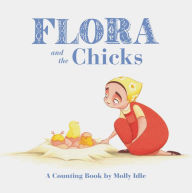 Graceful Flora from Flora and the Peacocks and Flora and the Penguin is back! This time, in Molly Idle's counting book Flora and the Chicks (Chronicle, $9.99, board book, 20p., ages 2-4, 9781452146577, March 7, 2017), she's juggling--almost literally at times--a clutch of hatching chicks while mama hen is away from the nest. One through 10, the chicks emerge from their eggs in shades of lemon yellow, tangerine and chocolate brown. Flora, in red overalls and yellow flowered kerchief, can barely keep up with the ever-more-lively hatchlings as they play in a bowl and wrestle a worm out of the ground. (Sharp-eyed readers will follow the worm's adventure from ground to beak and, sneakily, back into the ground again.) Gatefolds on alternating spreads give this charming board book extra airiness and space.
Graceful Flora from Flora and the Peacocks and Flora and the Penguin is back! This time, in Molly Idle's counting book Flora and the Chicks (Chronicle, $9.99, board book, 20p., ages 2-4, 9781452146577, March 7, 2017), she's juggling--almost literally at times--a clutch of hatching chicks while mama hen is away from the nest. One through 10, the chicks emerge from their eggs in shades of lemon yellow, tangerine and chocolate brown. Flora, in red overalls and yellow flowered kerchief, can barely keep up with the ever-more-lively hatchlings as they play in a bowl and wrestle a worm out of the ground. (Sharp-eyed readers will follow the worm's adventure from ground to beak and, sneakily, back into the ground again.) Gatefolds on alternating spreads give this charming board book extra airiness and space.
 In Bunny's Book Club (Doubleday, $17.99, hardcover, 40p., ages 3-7, 9780553537581, February 7, 2017), Annie Silvestro's debut picture book, adorably illustrated by Tatjana Mai-Wyss, a little brown rabbit is unable to resist the call of literature. Bunny thinks books are "better than a field full of fresh, crunchy carrots." After listening in to summer story time outside the library, Bunny needs to come up with another plan to access his beloved books when story time moves indoors with the start of cooler weather. The library is locked up at night, but that book return slot just might be his ticket in. Soon, Bunny is basking in books again. His friends--porcupine, raccoon, mole, bear--fall for reading, too. What happens when they finally get caught breaking in to the library will make readers of all ages smile.
In Bunny's Book Club (Doubleday, $17.99, hardcover, 40p., ages 3-7, 9780553537581, February 7, 2017), Annie Silvestro's debut picture book, adorably illustrated by Tatjana Mai-Wyss, a little brown rabbit is unable to resist the call of literature. Bunny thinks books are "better than a field full of fresh, crunchy carrots." After listening in to summer story time outside the library, Bunny needs to come up with another plan to access his beloved books when story time moves indoors with the start of cooler weather. The library is locked up at night, but that book return slot just might be his ticket in. Soon, Bunny is basking in books again. His friends--porcupine, raccoon, mole, bear--fall for reading, too. What happens when they finally get caught breaking in to the library will make readers of all ages smile.
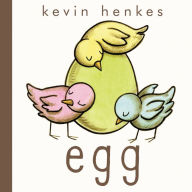 Themes of tolerance, patience, differences, transformation and the passage of time imbue Caldecott Honor artist Kevin Henkes's 50th published children's book, Egg (Greenwillow/HarperCollins, $17.99, hardcover, 40p., ages 4-8, 9780062408723, January 3, 2017), with lofty meaning given its seemingly simple text and artwork. To start, four pastel-colored eggs sit in four quadrants of a grid, each labeled "egg." On the facing page, something starts to happen to the pink, yellow and blue eggs: "crack/ crack/ crack/"... but the green one is quiet, and still labeled "egg." Next, birds hatch out of the pink, yellow and blue eggs: "surprise!/ surprise!/ surprise!" The green one remains still. But the biggest surprise is still to come when the green egg finally cracks open. As in Waiting, Henkes focuses on the small, significant things in the most unexpected ways, keeping readers happy and rapt.
Themes of tolerance, patience, differences, transformation and the passage of time imbue Caldecott Honor artist Kevin Henkes's 50th published children's book, Egg (Greenwillow/HarperCollins, $17.99, hardcover, 40p., ages 4-8, 9780062408723, January 3, 2017), with lofty meaning given its seemingly simple text and artwork. To start, four pastel-colored eggs sit in four quadrants of a grid, each labeled "egg." On the facing page, something starts to happen to the pink, yellow and blue eggs: "crack/ crack/ crack/"... but the green one is quiet, and still labeled "egg." Next, birds hatch out of the pink, yellow and blue eggs: "surprise!/ surprise!/ surprise!" The green one remains still. But the biggest surprise is still to come when the green egg finally cracks open. As in Waiting, Henkes focuses on the small, significant things in the most unexpected ways, keeping readers happy and rapt.
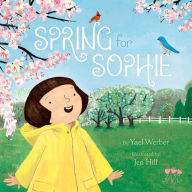 "How will I know when spring is coming?" a young girl asks her parents in Spring for Sophie (Paula Wiseman/S&S, $17.99, hardcover, 32p., ages 4-8, 9781481451345, February 21, 2017), Yael Werber's debut picture book, illustrated by Jen Hill (Percy and TumTum). Sophie's thoughtful parents tell her to listen for the birds, to feel for the softening of the ground with her feet, to watch for the snow to melt and to smell for the scent of earth and rain. When the rain finally falls, she runs out to catch it on her tongue. "Now I know spring is here!" she says. "Because this is what spring tastes like!" The quiet, almost lyrical exchanges between Sophie and her parents as they sit in front of a crackling fire or don their boots for a walk in the woods are reinforced by Hill's exquisite gouache paintings of a rural New England landscape. Simply lovely.
"How will I know when spring is coming?" a young girl asks her parents in Spring for Sophie (Paula Wiseman/S&S, $17.99, hardcover, 32p., ages 4-8, 9781481451345, February 21, 2017), Yael Werber's debut picture book, illustrated by Jen Hill (Percy and TumTum). Sophie's thoughtful parents tell her to listen for the birds, to feel for the softening of the ground with her feet, to watch for the snow to melt and to smell for the scent of earth and rain. When the rain finally falls, she runs out to catch it on her tongue. "Now I know spring is here!" she says. "Because this is what spring tastes like!" The quiet, almost lyrical exchanges between Sophie and her parents as they sit in front of a crackling fire or don their boots for a walk in the woods are reinforced by Hill's exquisite gouache paintings of a rural New England landscape. Simply lovely.
 When Kack Kack the duck lays an egg, her best friend, a frog named Bently, is underwhelmed. "It's just an egg," he thinks. But he reluctantly agrees to egg-sit when Kack Kack goes to visit her sister. He remains indifferent until he gets the notion to paint the plain white egg in splendid designs. "Now, this is an egg a frog could get attached to," Bently says. Unfortunately, at that moment, a boy nabs the lovely egg, believing the Easter Bunny has left it. Thus begins a wild duck egg chase that takes Bently through woods and into a house and up in a balloon. With its slapstick humor and elegant language, Bently & Egg (Atheneum/S&S, $17.99, hardcover, 32p., ages 4-8, 9781481489492, April 4, 2017) is a celebration of loyalty by the inimitable William Joyce (The Fantastic Flying Books of Mr. Morris Lessmore). --Emilie Coulter, freelance writer and editor
When Kack Kack the duck lays an egg, her best friend, a frog named Bently, is underwhelmed. "It's just an egg," he thinks. But he reluctantly agrees to egg-sit when Kack Kack goes to visit her sister. He remains indifferent until he gets the notion to paint the plain white egg in splendid designs. "Now, this is an egg a frog could get attached to," Bently says. Unfortunately, at that moment, a boy nabs the lovely egg, believing the Easter Bunny has left it. Thus begins a wild duck egg chase that takes Bently through woods and into a house and up in a balloon. With its slapstick humor and elegant language, Bently & Egg (Atheneum/S&S, $17.99, hardcover, 32p., ages 4-8, 9781481489492, April 4, 2017) is a celebration of loyalty by the inimitable William Joyce (The Fantastic Flying Books of Mr. Morris Lessmore). --Emilie Coulter, freelance writer and editor
Children's Books for Easter





 We're Going on an Egg Hunt (Bloomsbury, $17.99, hardcover, 24p., ages 3-6, 9781681193144, February 14, 2017) is British illustrator Laura Hughes's lift-the-flap Easter version of the classic camp song about a bear hunt. In this case, basket-, bucket- and net-carrying bunnies search for colorful eggs, overcoming all obstacles: "Oh, no--LAMBS!/ Can't go over them./ Can't go under them./ Can't go around them./ Got to go through them...." The excitement of Easter egg hunting intensifies when young readers find a big, scary surprise behind a huge, beautiful egg. Retreat! "Back through the ducks. Quack! Quack! Quack! Back through the bees. Buzz! Buzz! Buzz!" Just like the original bear hunt, all's well that ends well in this delightful interactive picture book, destined to become an Easter tradition.
We're Going on an Egg Hunt (Bloomsbury, $17.99, hardcover, 24p., ages 3-6, 9781681193144, February 14, 2017) is British illustrator Laura Hughes's lift-the-flap Easter version of the classic camp song about a bear hunt. In this case, basket-, bucket- and net-carrying bunnies search for colorful eggs, overcoming all obstacles: "Oh, no--LAMBS!/ Can't go over them./ Can't go under them./ Can't go around them./ Got to go through them...." The excitement of Easter egg hunting intensifies when young readers find a big, scary surprise behind a huge, beautiful egg. Retreat! "Back through the ducks. Quack! Quack! Quack! Back through the bees. Buzz! Buzz! Buzz!" Just like the original bear hunt, all's well that ends well in this delightful interactive picture book, destined to become an Easter tradition. Graceful Flora from
Graceful Flora from  In Bunny's Book Club (Doubleday, $17.99, hardcover, 40p., ages 3-7, 9780553537581, February 7, 2017), Annie Silvestro's debut picture book, adorably illustrated by Tatjana Mai-Wyss, a little brown rabbit is unable to resist the call of literature. Bunny thinks books are "better than a field full of fresh, crunchy carrots." After listening in to summer story time outside the library, Bunny needs to come up with another plan to access his beloved books when story time moves indoors with the start of cooler weather. The library is locked up at night, but that book return slot just might be his ticket in. Soon, Bunny is basking in books again. His friends--porcupine, raccoon, mole, bear--fall for reading, too. What happens when they finally get caught breaking in to the library will make readers of all ages smile.
In Bunny's Book Club (Doubleday, $17.99, hardcover, 40p., ages 3-7, 9780553537581, February 7, 2017), Annie Silvestro's debut picture book, adorably illustrated by Tatjana Mai-Wyss, a little brown rabbit is unable to resist the call of literature. Bunny thinks books are "better than a field full of fresh, crunchy carrots." After listening in to summer story time outside the library, Bunny needs to come up with another plan to access his beloved books when story time moves indoors with the start of cooler weather. The library is locked up at night, but that book return slot just might be his ticket in. Soon, Bunny is basking in books again. His friends--porcupine, raccoon, mole, bear--fall for reading, too. What happens when they finally get caught breaking in to the library will make readers of all ages smile. Themes of tolerance, patience, differences, transformation and the passage of time imbue Caldecott Honor artist
Themes of tolerance, patience, differences, transformation and the passage of time imbue Caldecott Honor artist  "How will I know when spring is coming?" a young girl asks her parents in Spring for Sophie (Paula Wiseman/S&S, $17.99, hardcover, 32p., ages 4-8, 9781481451345, February 21, 2017), Yael Werber's debut picture book, illustrated by Jen Hill (Percy and TumTum). Sophie's thoughtful parents tell her to listen for the birds, to feel for the softening of the ground with her feet, to watch for the snow to melt and to smell for the scent of earth and rain. When the rain finally falls, she runs out to catch it on her tongue. "Now I know spring is here!" she says. "Because this is what spring tastes like!" The quiet, almost lyrical exchanges between Sophie and her parents as they sit in front of a crackling fire or don their boots for a walk in the woods are reinforced by Hill's exquisite gouache paintings of a rural New England landscape. Simply lovely.
"How will I know when spring is coming?" a young girl asks her parents in Spring for Sophie (Paula Wiseman/S&S, $17.99, hardcover, 32p., ages 4-8, 9781481451345, February 21, 2017), Yael Werber's debut picture book, illustrated by Jen Hill (Percy and TumTum). Sophie's thoughtful parents tell her to listen for the birds, to feel for the softening of the ground with her feet, to watch for the snow to melt and to smell for the scent of earth and rain. When the rain finally falls, she runs out to catch it on her tongue. "Now I know spring is here!" she says. "Because this is what spring tastes like!" The quiet, almost lyrical exchanges between Sophie and her parents as they sit in front of a crackling fire or don their boots for a walk in the woods are reinforced by Hill's exquisite gouache paintings of a rural New England landscape. Simply lovely. When Kack Kack the duck lays an egg, her best friend, a frog named Bently, is underwhelmed. "It's just an egg," he thinks. But he reluctantly agrees to egg-sit when Kack Kack goes to visit her sister. He remains indifferent until he gets the notion to paint the plain white egg in splendid designs. "Now, this is an egg a frog could get attached to," Bently says. Unfortunately, at that moment, a boy nabs the lovely egg, believing the Easter Bunny has left it. Thus begins a wild duck egg chase that takes Bently through woods and into a house and up in a balloon. With its slapstick humor and elegant language, Bently & Egg (Atheneum/S&S, $17.99, hardcover, 32p., ages 4-8, 9781481489492, April 4, 2017) is a celebration of loyalty by the inimitable William Joyce (
When Kack Kack the duck lays an egg, her best friend, a frog named Bently, is underwhelmed. "It's just an egg," he thinks. But he reluctantly agrees to egg-sit when Kack Kack goes to visit her sister. He remains indifferent until he gets the notion to paint the plain white egg in splendid designs. "Now, this is an egg a frog could get attached to," Bently says. Unfortunately, at that moment, a boy nabs the lovely egg, believing the Easter Bunny has left it. Thus begins a wild duck egg chase that takes Bently through woods and into a house and up in a balloon. With its slapstick humor and elegant language, Bently & Egg (Atheneum/S&S, $17.99, hardcover, 32p., ages 4-8, 9781481489492, April 4, 2017) is a celebration of loyalty by the inimitable William Joyce (